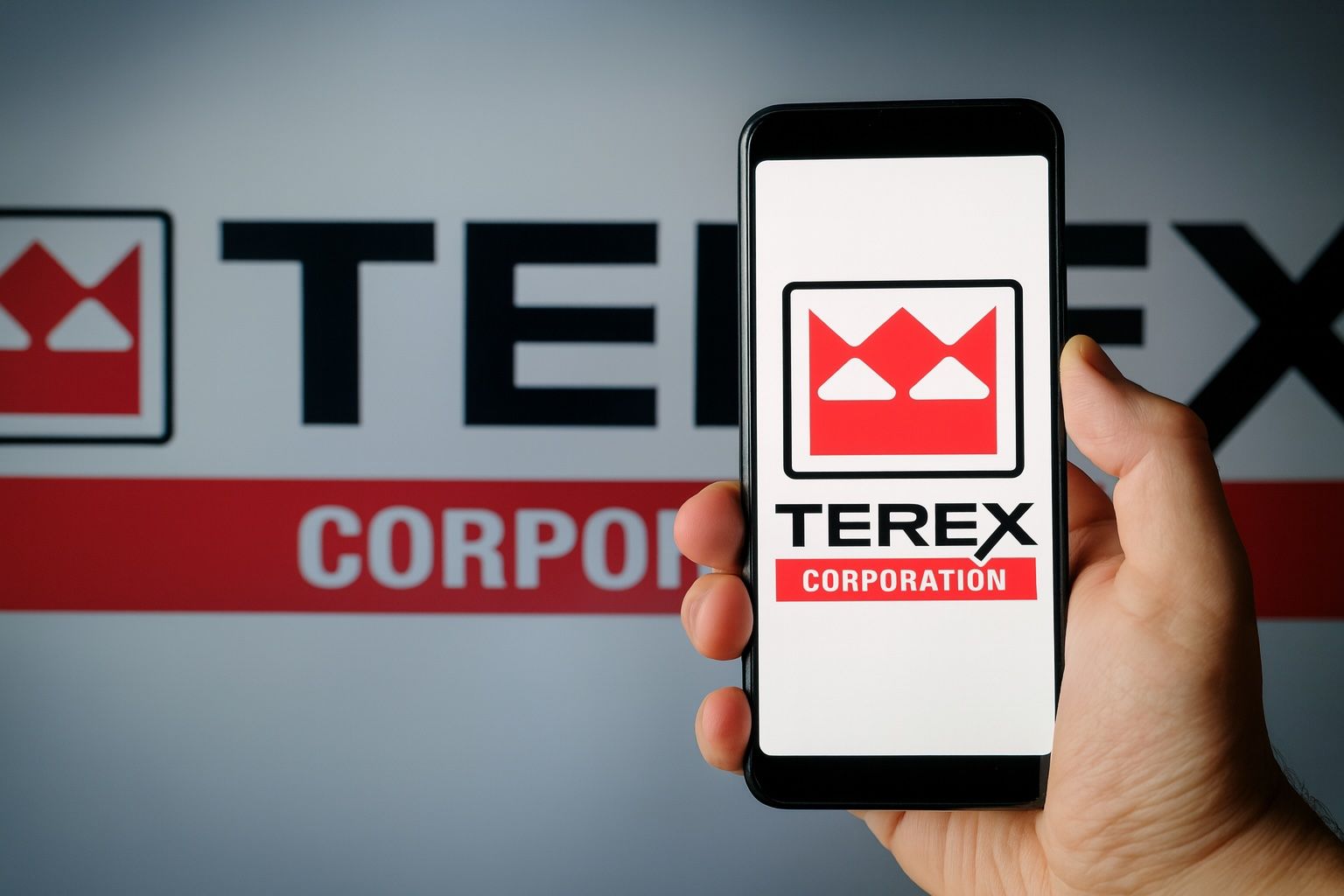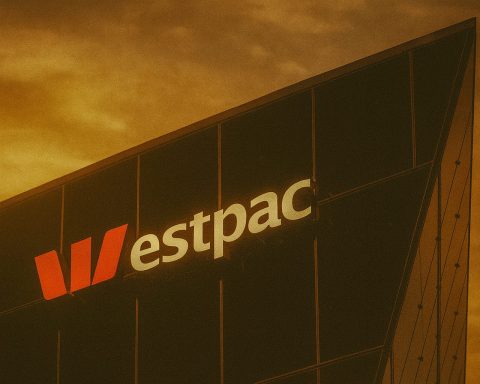- Price Action: On Oct. 30, 2025, Terex (NYSE:TEX) shares plunged roughly 15–18% intraday, trading near the mid-$40s (around $47–48 in mid-day) versus the prior close [1] [2]. This selloff followed a volatile session in which volume spiked and put options surged, reflecting investor uncertainty around the company’s earnings and strategic announcements.
- Q3 Results: Terex reported Q3’25 sales of $1.4 billion (up ~14% YoY) and GAAP EPS of $0.98 (adjusted EPS $1.50) [3]. Free cash flow was $130 M (cash conversion 200%). Importantly, management maintained full-year EPS guidance of about $4.70–$5.10 [4]. CEO Simon Meester highlighted that the firm “continue[s] to deliver solid performance,” with its Environmental Solutions segment growing strongly, and noted that holding guidance despite a “turbulent macro environment, market headwinds and changes in tariffs” shows the resilience of the Terex portfolio [5].
- Strategic Deals: Terex announced a definitive merger with REV Group (NYSE:REVG) in a stock+cash deal (~$9 billion total enterprise value) that creates a leading specialty equipment manufacturer [6] [7]. The combined company is projected to have about $7.8 billion in net sales and 14% EBITDA margin (post-synergies). REV shareholders will receive 0.9809 TEX share + $8.71 cash each, leaving Terex shareholders with ~58% of the merged entity [8]. Management expects $75 M in run-rate cost synergies by 2028 [9]. In connection with the deal, Terex announced plans to exit its aerial lift (“Aerials”) segment (via sale or spin-off) [10], and separately it has agreed to sell its tower/rough-terrain crane lines to Italy’s Raimondi Cranes [11]. These moves further refocus the business on its Materials Processing and Environmental segments.
- Analyst Views: Wall Street reactions are mixed. Raymond James on Oct. 27 upgraded Terex to “Outperform,” with a $70 target, citing “outsized risk-adjusted upside potential” (about +25% from the price pre-announcement) [12]. By contrast, the consensus 12-month price target among ~12 analysts is about $56 (roughly +17% upside) [13]. (Targets range widely from ~$30 to $70 [14].) The average rating is a modest “Moderate Buy,” with no firm outright bearish on the name. On the REV side, analysts noted the transaction targets more resilient markets (emergency vehicles, waste management); Intellectia reported REV shares hit 20-day highs as investors welcomed roughly $75 M in synergies by 2028 [15].
- Macroeconomic Context: Terex operates in construction, infrastructure and utility equipment markets. Industry forecasts (e.g. Deloitte) point to continued support from U.S. infrastructure spending (IIJA, Inflation Reduction Act, CHIPS Act), which should bolster demand for heavy machinery [16]. However, the near-term backdrop remains challenging: interest rates (the Fed just cut another 0.25% on Oct. 29) are only slowly easing [17], and tariffs have been rising (expanded steel/aluminum levies). Terex’s CFO explicitly said the new tariffs will cut about $0.70 off FY2025 EPS [18]. Management’s guidance assumes tariffs stay “broadly at current rates” [19], and Morgan Stanley earlier this year noted the sector faces “significant macro headwinds” and high debt burdens (MS holds a cautious Underweight on TEX, ~$33 target) [20].
- Dividend/Capital Return: The company pays a small quarterly dividend ($0.17 in Q4) and continues stock buybacks (authorizing a $150 M repurchase in Q2). With debt modest (net debt/EBITDA ~2.5x even after the merger [21]) and operating cash flow strong (FCF ~$130M in Q3; full-year >$300M expected [22]), Terex is positioned to support shareholder returns.
In-Depth Analysis
Terex’s stock slump on Oct. 30 came amid two shocks: mixed Q3 earnings results and a transformational merger announcement. After a previous close near $56, shares briefly traded in the mid-$40s, reflecting roughly an 18% intraday fall [23] [24]. Ts2.tech noted that “Terex fell ~18%” after the quarter (“weaker revenue”) news [25], a move echoed by institutional traders and option activity. By afternoon, volume had spiked and the stock was well below pre-earnings levels. For context, the 52-week range is $31.53–$58.66 [26], so even after the drop, shares remain above their 2025 low (around $32 last winter) but well off recent highs.
Q3 Financials: The official Q3 release showed net sales of $1.4B (up 14% YoY) and GAAP EPS $0.98 [27]. Adjusted EPS was $1.50, roughly flat with last year’s $1.46. Operating margin (adjusted) was 12.1%, aided by the acquired Environmental Solutions Group (ESG) business, which continues to outperform legacy divisions. Free cash flow was robust at $130M (200% cash conversion) [28]. On the surface, these results were in line with expectations, but market participants focused on a few caveats: bookings, legacy segment weakness, and guidance. Bookings were roughly $1.0B (pro forma +57% YoY), but book-to-bill was only 0.72 (seasonally lower). Notably, Aerials and Materials Processing revenues fell (down ~8–10% excluding ESG) due to softer construction and rental markets [29].
Management took pains to reassure investors. CEO Simon Meester emphasized that Terex is “on track” and that retaining full-year guidance despite “turbulent macro environment, market headwinds and changes in tariffs” highlights the company’s resilience [30]. Indeed, the guidance remains for $4.70–$5.10 EPS in 2025 [31] (see [58] for outlook). CFO Jennifer Kong-Picarello echoed this, noting strong cash flow (FCF conversion 100% YTD [32]) and a solid backlog. She warned, however, that mid-August’s expanded U.S. steel/aluminum tariffs would add roughly $0.70 of headwind to full-year EPS [33]. Taking that into account, Terex continues to expect $4.70–$5.10 EPS on the year. No other guidance changes were announced; Terex’s balance sheet remains healthy with a net debt/EBITDA target ~2.5x even after these deals [34].
Merger with REV Group: The biggest development Oct. 30 was the merger deal with REV Group (a maker of specialty vehicles). Terex and REV Boards unanimously approved a transaction that will merge the two companies in an all-stock (plus cash) deal [35] [36]. REV shareholders will receive 0.9809 shares of the combined entity plus $8.71 in cash per REV share (total ~$425M). After closing, Terex holders own ~58% of the merged company and REV holders ~42% [37]. The combined firm’s projected net sales are about $7.8 billion (2025 pro forma) with ~14% adjusted EBITDA margin [38].
Management touts significant strategic benefits. CEO Meester called the merger “a transformative step” that creates “a large-scale, diversified industrial leader” with stronger cash flow and growth prospects [39]. REV’s CEO similarly praised the deal as a way to build “a stronger, more profitable and scaled company” [40]. The companies expect roughly $75 million of annual synergies by 2028 (half realized within 12 months) [41]. The merger widens Terex’s end-market focus to include REV’s emergency vehicles and waste-management segments, which management sees as lower-cyclicality and high-growth markets [42]. Both firms will maintain a U.S. NYSE listing under the symbol “TEX,” and Meester will be CEO of the combined company. Closing is anticipated in H1 2026, subject to shareholder and regulatory approval [43].
As part of this strategic shift, Terex announced it will pursue a sale or spin-off of its Aerial Work Platform (MEWP) business [44] [45]. The aerial segment has been under pressure (rental industry capex is soft), so exiting it is aimed at reducing cyclicality. (Separately, on Sept. 2 Terex had already agreed to divest its Tower and Rough Terrain Crane businesses to Italy’s Raimondi Cranes [46].) After these moves, Terex’s core will be Materials Processing (crushing, screening, material handling) plus the acquired Environmental Solutions Group, which provides waste recycling equipment and has shown double-digit growth.
Analyst Commentary: Analysts were initially surprised by the merger news. As noted above, Raymond James upgraded TEX to “Outperform” just days before the announcement, believing the stock offered “outsized risk-adjusted upside potential” and a chance to revisit higher historical levels [47]. RJ set a $70 price target (implying ~25% total return), arguing that Terex’s pivot to higher-margin environmental products would ultimately boost earnings. In contrast, some other firms had been more cautious: Morgan Stanley in May kept an Underweight rating (16.1× forward P/E) despite hiking its target to $33 [48], citing continued macro headwinds and leverage risks in legacy segments. (TipRanks in October noted MS’s $30 target, possibly factoring in the aerial exit.)
According to MarketBeat, of ~12 analysts covering TEX, 6 are Buy (including 1 Strong Buy) and 6 are Hold [49]. The consensus 12-month target is about $56.20 [50] – roughly 17% above today’s price – with a high of $70 and a low near $30 [51]. Most analysts emphasize that the near-term outlook depends on how the merger integration goes and whether construction demand rebounds. As RJ’s team noted, investors may soon “discount an EPS trough” and begin to value Terex on a higher “midcycle” earnings level [52] once macro pressures ease. In sum, analysts see limited immediate upside until the execution risk is addressed, but a favorable long-term thesis if Terex can successfully combine with REV and grow its environmental franchise.
Outlook and Context: In the short term, expect continued volatility. The stock’s technical picture is weak (breaking below $50 support) [53] and options activity suggests a bearish tilt (heavy put buying around $45 strikes). Fundamental risks include the integration of two complex businesses and any hiccups in divestitures. However, Terex’s longer-term outlook is supported by solid fundamentals in its main markets. Industry reports (e.g. Deloitte) forecast moderate growth in U.S. construction and industrial investment thanks to government infrastructure programs [54]. Lowered U.S. interest rates (a 0.25% cut on Oct. 29) may gradually ease financing costs [55]. Global equipment demand could also get a lift from rising mining, renewable energy and data-center construction spending. On the other hand, inflation and trade tensions remain concerns: the Fed indicated it is watching mixed economic signals [56], and new tariffs (including those on Chinese goods) could pressure costs and demand. Management’s roadmap assumes current tariff rates stay in place [57]; any major trade-policy shifts would be a wildcard.
For shareholders, the key metrics to watch are execution and cash flow. Management projects 2025 FCF of $300–$350 M (120%+ conversion) [58], a robust cash generation that should allow continued debt paydown and shareholder returns (dividends or buybacks). Indeed, Terex declared a $0.17 quarterly dividend in Q3 (ex-div 11/10, payable 12/19) and authorized a $150M buyback in July (with ~$300M remaining on its repurchase authorization). If integration goes smoothly, long-term investors could benefit from the enlarged scale and lower cyclicality – analysts point out that the pro forma EBITDA margin (14%) is higher than Terex’s standalone business (11%) [59]. However, until the picture clears, expect the stock to track news flow closely.
Sources: Company filings and press releases, market data, and analyst reports [60] [61] [62] [63] [64] [65] [66] [67]. (Stock data from StockAnalysis.com [68]; price change from ts2.tech report [69].)
References
1. stockanalysis.com, 2. ts2.tech, 3. investors.terex.com, 4. investors.terex.com, 5. investors.terex.com, 6. investors.terex.com, 7. investors.terex.com, 8. investors.terex.com, 9. investors.terex.com, 10. investors.terex.com, 11. www.prnewswire.com, 12. www.investing.com, 13. www.marketbeat.com, 14. www.marketbeat.com, 15. intellectia.ai, 16. www.deloitte.com, 17. www.reuters.com, 18. investors.terex.com, 19. investors.terex.com, 20. www.gurufocus.com, 21. investors.terex.com, 22. investors.terex.com, 23. stockanalysis.com, 24. ts2.tech, 25. ts2.tech, 26. stockanalysis.com, 27. investors.terex.com, 28. investors.terex.com, 29. investors.terex.com, 30. investors.terex.com, 31. investors.terex.com, 32. investors.terex.com, 33. investors.terex.com, 34. investors.terex.com, 35. investors.terex.com, 36. investors.terex.com, 37. investors.terex.com, 38. investors.terex.com, 39. investors.terex.com, 40. investors.terex.com, 41. investors.terex.com, 42. investors.terex.com, 43. investors.terex.com, 44. investors.terex.com, 45. investors.terex.com, 46. www.prnewswire.com, 47. www.investing.com, 48. www.gurufocus.com, 49. www.marketbeat.com, 50. www.marketbeat.com, 51. www.marketbeat.com, 52. www.investing.com, 53. www.ainvest.com, 54. www.deloitte.com, 55. www.reuters.com, 56. www.reuters.com, 57. investors.terex.com, 58. investors.terex.com, 59. investors.terex.com, 60. investors.terex.com, 61. investors.terex.com, 62. www.prnewswire.com, 63. www.investing.com, 64. www.marketbeat.com, 65. intellectia.ai, 66. www.deloitte.com, 67. investors.terex.com, 68. stockanalysis.com, 69. ts2.tech







